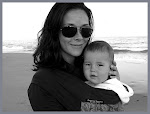
 May is Bike month in NYC... a safe Sunday afternoon ride to kick things off!
May is Bike month in NYC... a safe Sunday afternoon ride to kick things off!Even at 2 years old, on a bike with no pedals (it's a Like-a-bike... it should be called love-a-bike because we all really really LOVE THIS BIKE!- if you don't have one and you have a child under 5 years old, you should definitely get one), Oliver is learning that basic bike safety is a must. He knows to wear his helmet, stop at corners, watch for other bikers and people on the sidewalks but bike month in NYC has gotten me thinking about what else I should be teaching my kids about bike safety.
I was actually surprised to learn that over 300,000 kids go to the emergency department every year for bike related injuries. Wow. So what should we be teaching them to hopefully lower that number this year? Here's a little checklist to go over with your child.
1. ALWAYS wear a helmet. Make sure the straps are fastened and that the helmet fits well, not too big, not too small. You can have a bike shop or your pediatrician check this if you have a question re: fit.
2. Wear bright clothing or place reflectors on your bicycle.
3. Wear shoes (no bare feet, no flip flops).
4. Choose paths without traffic if possible.
5. Keep you hands on the handle bars (except for when performing traffic signs for turns, etc)
6. Stop, look and listen at intersections.
7. Ride with the flow of traffic, not against.
8. Be aware if riding close to parked cars that doors may open (When we lived in Chicago, I actually saw a man get thrown from his bike from this exact thing happening... not pretty).
9. Ride with a friend or family member and help each other pay attention to your surroundings.
10. Pass other bikers and pedestrians on the left side, calling "on your left" as you go by. (Personal note: try to say "on your left" in a loud but nice voice- not like some bikers in Central Park and on the West Side Highway path... they're loud and not nice! The truth is other people are having a moment in their day just like you are. It's your responsibility to let them know you're there and you can do this in a respectful, kind way. That last part is where my 10 year old roles his eyes... feel free to do the same, I know- can't help it).
A great article outlining the most common bicycle/car accidents- top 10
Be safe, have fun!
know more. worry less.


















